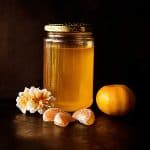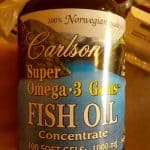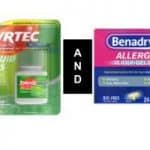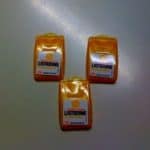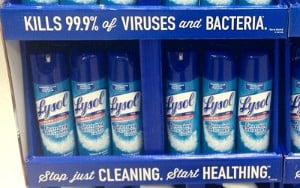
With the media constantly telling people they need to disinfect and sanitize everything, no wonder dog owners struggle to find the best products to use around their pets.
Unfortunately, most of the disinfectants on the market touted to kill 99.9% of viruses and bacteria might end up killing your dog, too, or at least cause him significant health problems.
In this article we’ll explain why products like Lysol are dangerous for dogs and other pets, and look at safe alternatives.
It’s not just direct contact with such products you should worry about, but also the long-term effects indirect exposure to the chemicals in household disinfectants can cause.
What you will learn from this article:
- What is Lysol?
- What are the main ingredients in Lysol?
- Is Lysol toxic to dogs after it dries?
- Can I spray Lysol on my dog?
- Is disinfectant not safe for dogs?
- What is the safest cleaning product to use around dogs?
- How to safely store cleaning products
- Is Lysol toxic to dogs?
- Can I spray Lysol on a dog bed?
- Closing thoughts
What is Lysol?
Lysol is an American brand specializing in cleaning and disinfecting products.
The same company, Reckitt, also owns Dettol and Sagrotan, distributed on various European markets as disinfectants.
They’re quite similar to Lysol so you need to exercise the same caution when using them around pets or small children.
Lysol has been around since the 1918 Spanish flu pandemic, when it was also advertised as a powerful disinfectant and was widely used to clean the rooms and any objects an infected person might have touched.
There are various Lysol formulations on the market from sprays to disinfect virtually all surfaces to washing liquids.
The first indication that these strong disinfectants are not safe for pets often comes from the label, with most products carrying a warning that they are hazardous for both humans and pets.
What are the main ingredients in Lysol?
If you look at the label, you’ll see that Lysol contains several sanitizing and antiseptic compounds, which together combine to kill almost all viruses and bacteria they encounter.
Ethanol
Ethanol, or simply alcohol, is one of the main sanitizing compounds in Lysol. Alcohol is toxic for dogs, whether it is absorbed through the skin or ingested.
Due to their smaller size, dogs have a lower toxicity level and are at risk of developing alcohol poisoning even when they ingest a much smaller amount than would be considered dangerous to humans.
However, it’s not ethanol that makes Lysol so dangerous for dogs. There’s worse.
Isopropyl alcohol
This compound is widely used in household chemicals and can be found in many types of antiseptics, disinfectants and detergents.
This is what gives Lysol its strong odor.
Isopropyl alcohol is also used as a solvent, de-icing product, and as an anesthetic: just to give you an idea how powerful a chemical it is.
What makes it toxic to humans and animals is the fact that this compound can be oxidized into acetone, which, by the way, is the main ingredient in nail polish remover.
This can be toxic to dogs whether ingested, inhaled or absorbed through the skin.
Acetone acts as central nervous system depressant and causes symptoms such as:
- Nausea
- Vomiting
- Dizziness
- Low blood pressure
- Hypothermia
- Respiratory depression and coma
Phenol
Lysol contains 5-6 % p-Chloro-o-benzylphenol, or, to put it in simple English a type of phenol used as antiseptic. This is what makes Lysol so dangerous to both humans and pets.
You don’t need to know the fancy chemical names to detect the presence of phenols in a cleaning or disinfecting product. If the product becomes cloudy when mixed with water it probably contains phenol.
There have been numerous studies on phenol toxicity for humans or pets. According to the CDC, ‘exposure to phenol may cause irritation to the skin, eyes, nose, throat, and the nervous system’ for humans, and the same is true for dogs and cats.
Pets exposed to phenol can develop burns at the mouth and throat level, if the animal licks its paws after coming in contact with surfaces disinfected with dangerous products, like Lysol.
Other symptoms of phenol poisoning include
- Necrosis of the skin
- Necrosis of the mucous membranes (mouth, throat, stomach lining)
- Depression of the central nervous system, which might leave the animal unable to breathe.
Is Lysol toxic to dogs after it dries?
If you feel you need to disinfect the house with Lysol, you should only do that when the dog is not around. Use the product as directed.
According to the manufacturer you should leave the spray on a surface for up to 10 minutes to kill all germs and viruses.
After that you should wipe with fresh water or a wet towel any surface that will come into contact with food, children or pets to reduce Lysol toxicity. Basically, you disinfect the house and then clean it all over again.
Also, make sure the surfaces are perfectly dry before you allow the dog back into the house.
At the same time, you need to air the house as Lysol fumes are dangerous as well. Take your dog’s water and food bowl away while you do the cleaning and wash them abundantly with water before putting them back.
Do not use products such as Lysol to clean your dog’s toys or bedding.
Can I spray Lysol on my dog?
NO! No matter what you’re trying to get rid of, like fleas, ticks or simply body odor, you should never spray such a powerful disinfectant on your dog, unless you want to see him writhing in pain or dying in front of your eyes.
Is disinfectant not safe for dogs?
Dogs make a lot of mess around the house, and cleaning after them can be quite a hassle. You should, however, check the label of any cleaning or disinfecting product to make sure it’s not toxic for pets.
Here are a few of the most toxic chemicals commonly found in this type of products.
Ammonia – Routinely found in many kitchen cleaners, ammonia can cause burns to the mucous membranes, if the dog licks his paws or surfaces recently cleaned with such a product. Also, ammonia mixed with bleach can create a toxic gas that can be lethal to small dogs.
Chlorine – Another chemical to be found in many disinfectants, chlorine can cause dizziness, vomiting or laryngeal edema. It’s commonly found in bathroom and toilet bowl cleaners. If your dog occasionally drinks from the toilet bowl, do not use any chlorine-based disinfectant, like Clorox.
Bleach is less strong than chlorine, but still not safe for dogs.
Glycol Ethers – You can find glycol ethers in many carpet cleaners, glass cleaners or spot removers. Long-term exposure to this compound can cause nausea,anemia, as well as lung and kidney damage
What is the safest cleaning product to use around dogs?
You don’t always need disinfectants and cleaning products full of harsh chemicals. Here’s a look at some pet-friendly common household items you can use to keep your home clean and germ-free.
Soap
Ever heard of water and soap? No matter how many fancy cleaning products you might find on the market, water and soap are just as effective and they’re not toxic to you or your pet.
Even at the height of the Covid-19 pandemic, health experts recommended washing your hands with plain soap and water. Hand sanitizers are an alternative for those instances when you do not have easy access to a sink to wash your hands properly.
If you want to clean your dog’s bedding and toys, soap is safer than any detergent, only make sure to rinse everything properly.
Baking soda
The humble baking soda can be used to solve many cleaning problems and it is safe for dogs. The easiest way to use baking soda is to mix it with water to create a paste you can apply on kitchen or bathroom surfaces. You can also use it on surfaces that are notoriously difficult to clean, like upholstery or patio furniture.
Also, once in a while you can give your dog a bath and add a cup of baking soda to the water. It’s good for skin problems and leaves the coat shiny.
White vinegar/Apple cider vinegar
Vinegar has good antimicrobial and antifungal properties so it can very well be used for cleaning around the house. A 50-50 water and vinegar solution can be used to clean kitchen and bathroom surfaces, as well as to remove sticky spills or dirt off the floor. Diluted vinegar is perfectly safe for dogs. You can also add a bit of lemon juice to make the solution more efficient.
Hydrogen peroxide
Hydrogen peroxide can be used as an antiseptic as well as to remove difficult stains.It is particularly useful during your puppy’s house training as it neutralizes the odor left behind by urine stains. You want to erase any trace of the smell otherwise your dog might take it into his head that is where the toilet is.
How to safely store cleaning products
Cleaning and disinfecting products are toxic, but you still need them around the house. If you have pets, exercise the same caution you’d use with small children. Actually more, as dogs can chew their way through a plastic child-resistant container.
Store all your cleaning products in a locked closet. Anything that might be remotely dangerous should be kept out of your dog’s sight. Also, when using toxic chemicals make sure your dog is not around. There’s the danger of toxic vapors and you don’t want to take any chances with an accidental spill. Your dog could pounce on it in an instant and start licking at the brightly-colored liquid, just out of curiosity.
Is Lysol toxic to dogs?
The three biggest active ingredients in Lysol (ethanol, isopropyl alcohol and phenol) are all known toxins to dogs.
But they aren’t poisonous in the amounts that people would use to clean their homes.
For instance if you are using a Lysol spray and you dog happened to lick a small area that you have just sprayed then although they will get a nasty taste in their mouth and they might sneeze, it is unlikely that they will come to any real harm.
Similarly, if you are cleaning your floors with a multi surface cleaner and your dog was following you around sniffing and licking behind you, this wouldn’t poison your dog because the Lysol cleaner would be very diluted with water.
The only worry from these products come from dogs that ingest large quantities of a Lysol cleaning product.
For instance, that they ate a bottle of Lysol and most of the contents.
If such an unlikely thing were to happen then you must phone your vet immediately.
Can I spray Lysol on a dog bed?
Yes, you can spray Lysol on a dog bed.
And they created a very specific spray that is safe for your dog- and would be the perfect solution.
It is called the Lysol Pet Disinfecting Cleaner and is made using just hydrogen peroxide.
However, there are a couple of things to bear in mind.
Firstly, this product is designed to be used on hard surfaces such as vinyl, wood or laminate and not on soft fabrics such as beds.
Secondly, if you do spray it on a dog bed, you must wait for it to dry before letting your dog back on it.
And speaking from years of experience here, I’m not sure that there are any short cuts to washing a dog bed.
I think that at times the only way to wash a dog bed properly is to put it in the washing machine.
Closing thoughts
If you have dogs, using Lysol around the house is not a good idea. Besides alcohol, Lysol also contains phenol which can be extremely dangerous for your dog. Dogs can get phenol poisoning by licking at their paws, by skin contact with a disinfected area or by ingesting toxic fumes. Never use Lysol when your dog is around and make sure all surfaces are dry and the rooms well aired before allowing your pet back inside.
If you want to keep your dog safe and healthy, try to use mostly pet-friendly products like soap, baking soda or vinegar, which can be quite as efficient as store-bought cleaning products. And they’re better for your health, as well.

